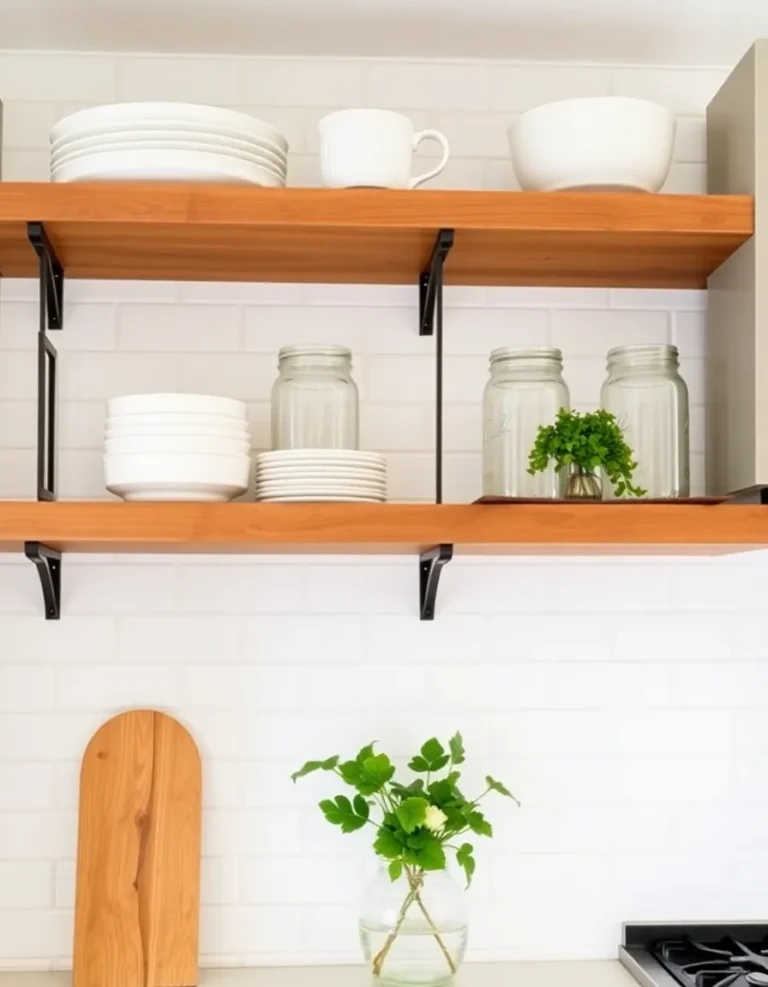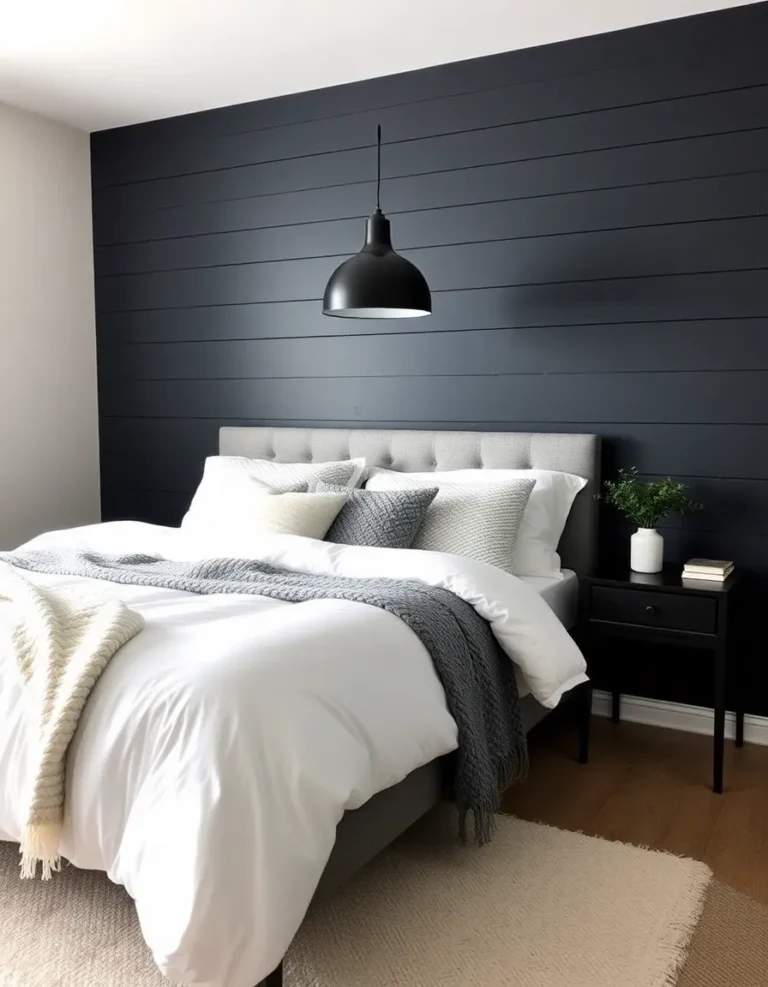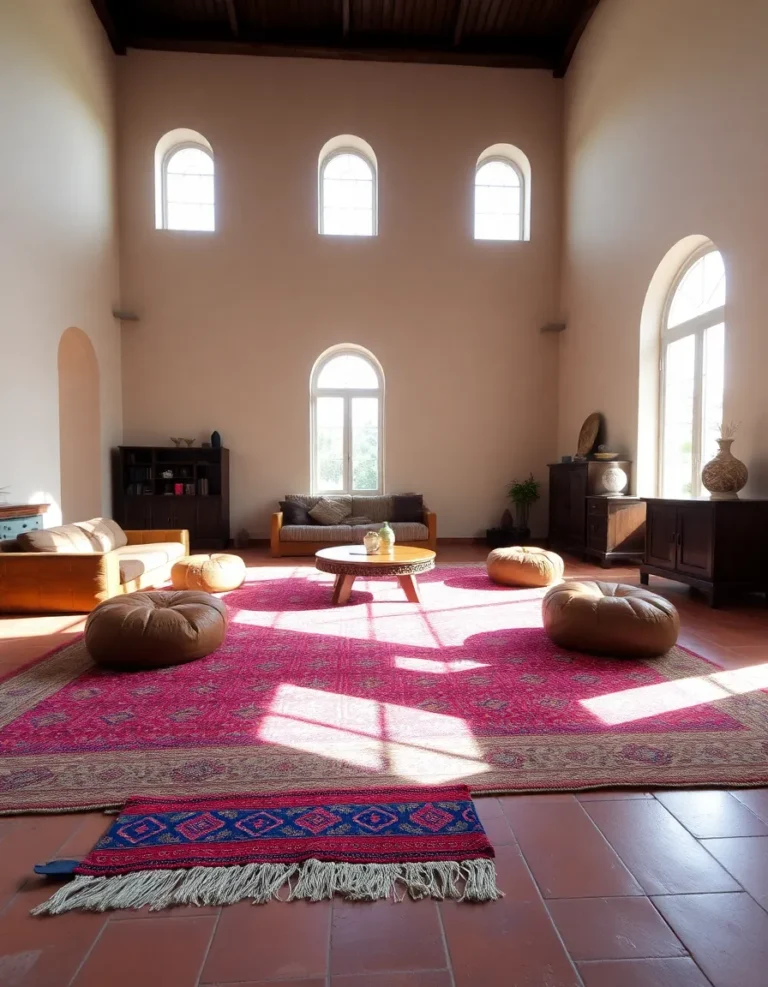Defining Features of Mid-Century Bedroom Furniture (Tapered Legs, Clean Lines, Wood Finishes)
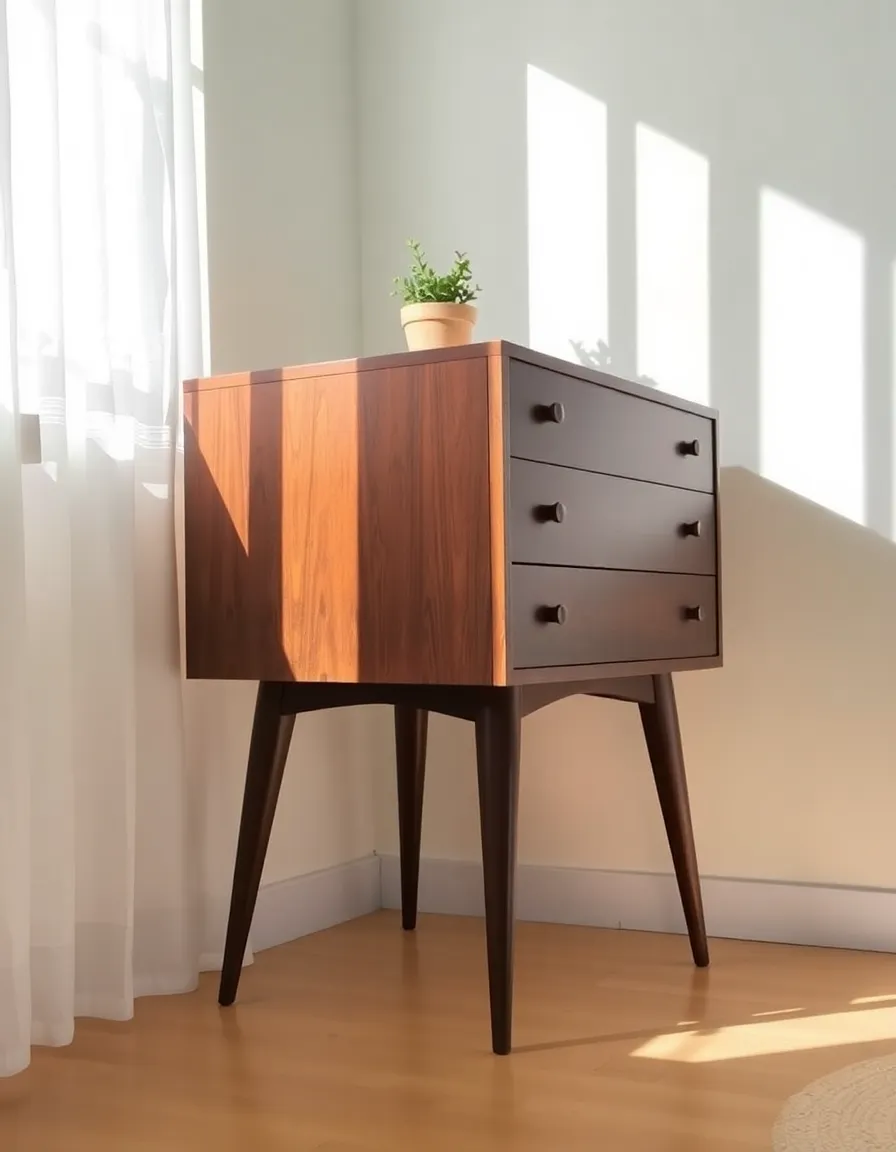
1. Tapered Legs: The Unsung Heroes of Mid-Century Style
Let’s talk about tapered legs—because honestly, what’s a mid-century piece without them? These slender, angled legs are like the skinny jeans of furniture: effortlessly cool, universally flattering, and impossible to ignore. They give dressers, nightstands, and beds that signature lift, making everything feel lighter and more refined. No clunky, blocky bases here—just sleek, gravity-defying elegance.
I remember the first time I spotted a vintage mid-century dresser with tapered legs. It looked like it was floating, and I half-expected it to start levitating. (Spoiler: It didn’t. But hey, a girl can dream.) The magic is in the subtle inward slope, which creates visual balance without screaming for attention. It’s the kind of detail that makes you nod and think, “Yep, that’s the good stuff.”
Why do tapered legs work so well? For starters, they keep the design from feeling too heavy. Mid-century furniture loves to play with negative space, and these legs are the perfect accomplice. Plus, they’re surprisingly sturdy—no wobbling here, unless you’ve got a seriously uneven floor (we’ve all been there). Whether you’re into walnut, teak, or lighter oak finishes, tapered legs tie everything together like a perfectly knotted scarf.
FYI, if you’re hunting for authentic mid-century pieces, check the legs first. A lot of modern “inspired” furniture skimps on this detail, opting for straight or chunky legs instead. Don’t settle—your bedroom deserves better.
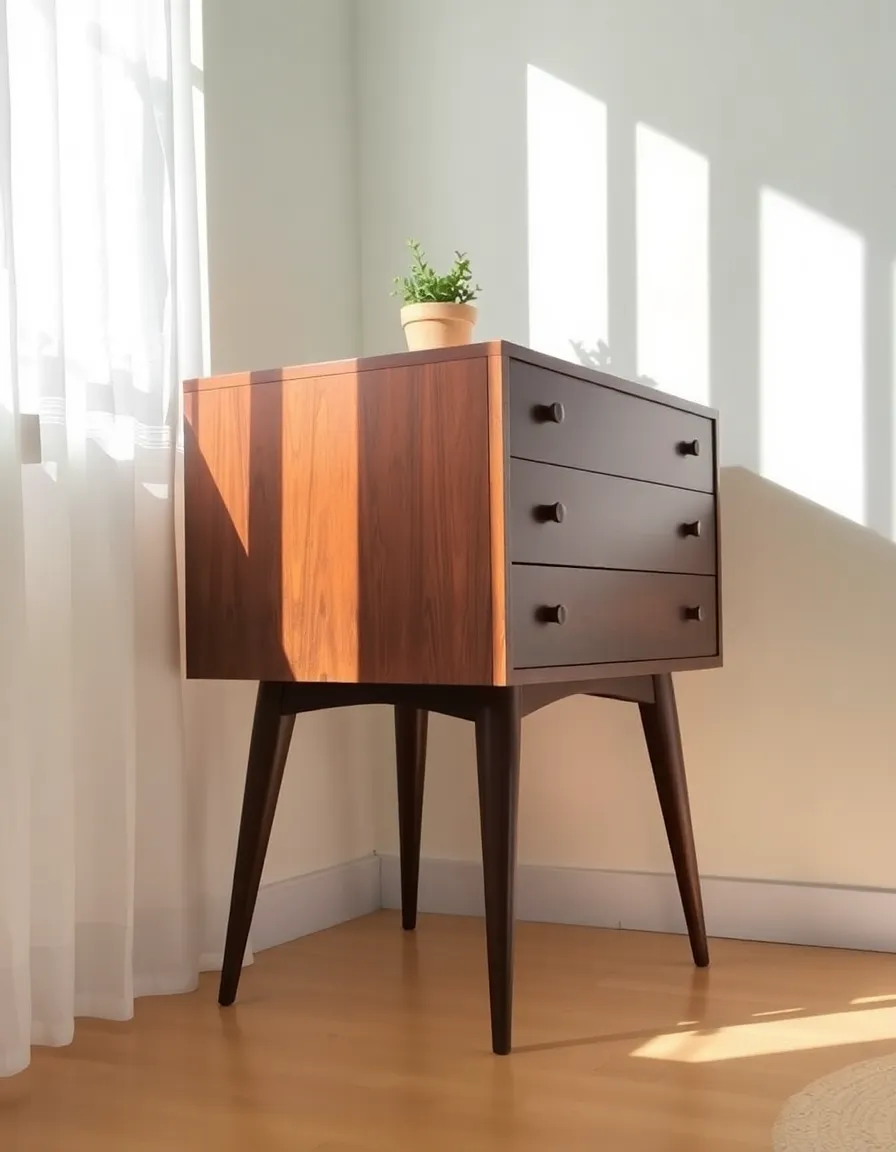
2. Clean Lines: Less Fuss, More Function
If mid-century design had a motto, it’d probably be “Keep it simple, stupid.” (KISS, for short—how very mid-century of it.) Clean lines are the backbone of this style, stripping away unnecessary frills and letting the form speak for itself. No ornate carvings, no excessive curves—just straight, honest shapes that say, “I’m here to look good and hold your stuff.”
Think of it like a well-tailored suit. A great suit doesn’t need sequins or ruffles to impress; it relies on sharp lines and perfect proportions. Mid-century bedroom furniture works the same way. A nightstand isn’t just a nightstand—it’s a minimalist sculpture that happens to hold your alarm clock and a half-empty glass of water.
One of my favorite things about clean lines? They make small spaces feel bigger. If your bedroom is on the cozy side (read: barely fits a bed and a yoga mat), mid-century furniture won’t overwhelm it. The lack of visual clutter keeps things airy, and the straight edges create a sense of order. No more stubbing your toe on random decorative knobs—just smooth, uninterrupted surfaces.
Of course, “clean” doesn’t mean boring. The beauty is in the details: a slight bevel on a drawer front, a perfectly aligned grain pattern, or a discreet handle that blends seamlessly into the design. It’s the kind of subtlety that makes you appreciate the craftsmanship.
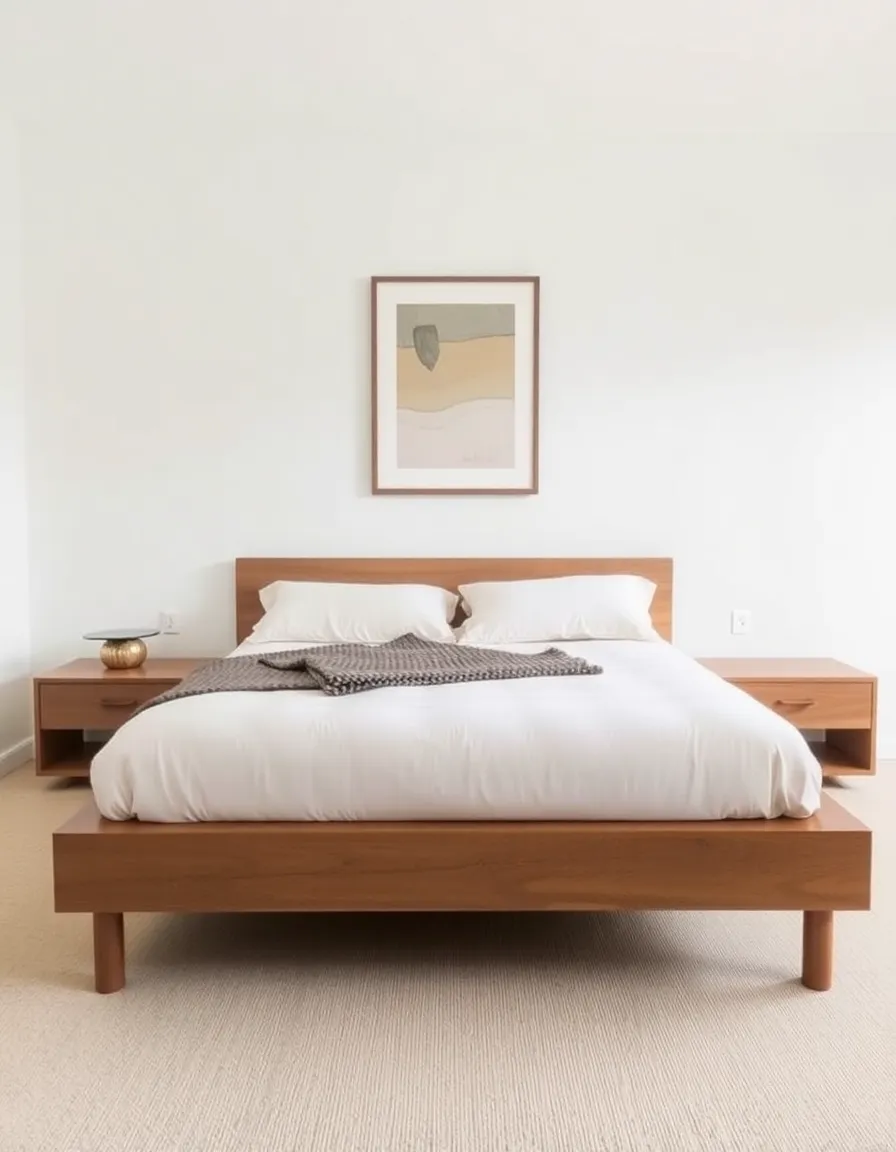
3. Wood Finishes: Warmth That Never Goes Out of Style
Ah, wood finishes—the soul of mid-century furniture. There’s something undeniably inviting about real wood grain, whether it’s rich walnut, golden teak, or honey-toned oak. Unlike the plasticky veneers of some modern furniture, mid-century pieces celebrate the natural beauty of wood, flaws and all.
I’ll admit, I’m a sucker for a good teak finish. There’s a warmth to it that just feels… right. Like a cozy sweater for your bedroom. And walnut? Don’t even get me started. It’s the James Bond of woods—sophisticated, timeless, and always in control. Even lighter woods like ash or birch have their charm, especially if you’re going for a brighter, Scandinavian-inspired vibe.
But here’s the thing: not all wood finishes are created equal. Mid-century designers loved letting the grain take center stage, often using oil or lacquer to enhance the natural patterns. If you’re shopping for vintage pieces, look for that depth of color—none of that flat, “I was definitely made in a factory last week” look. And if you’re going modern, opt for solid wood or high-quality veneers. Your future self will thank you.
Pro tip: Mixing wood tones can work, but keep it intentional. A walnut bedframe with lighter oak nightstands? Sure, if you’re into contrast. Just avoid turning your bedroom into a wood-sample collage. Unless that’s your thing—no judgment here.
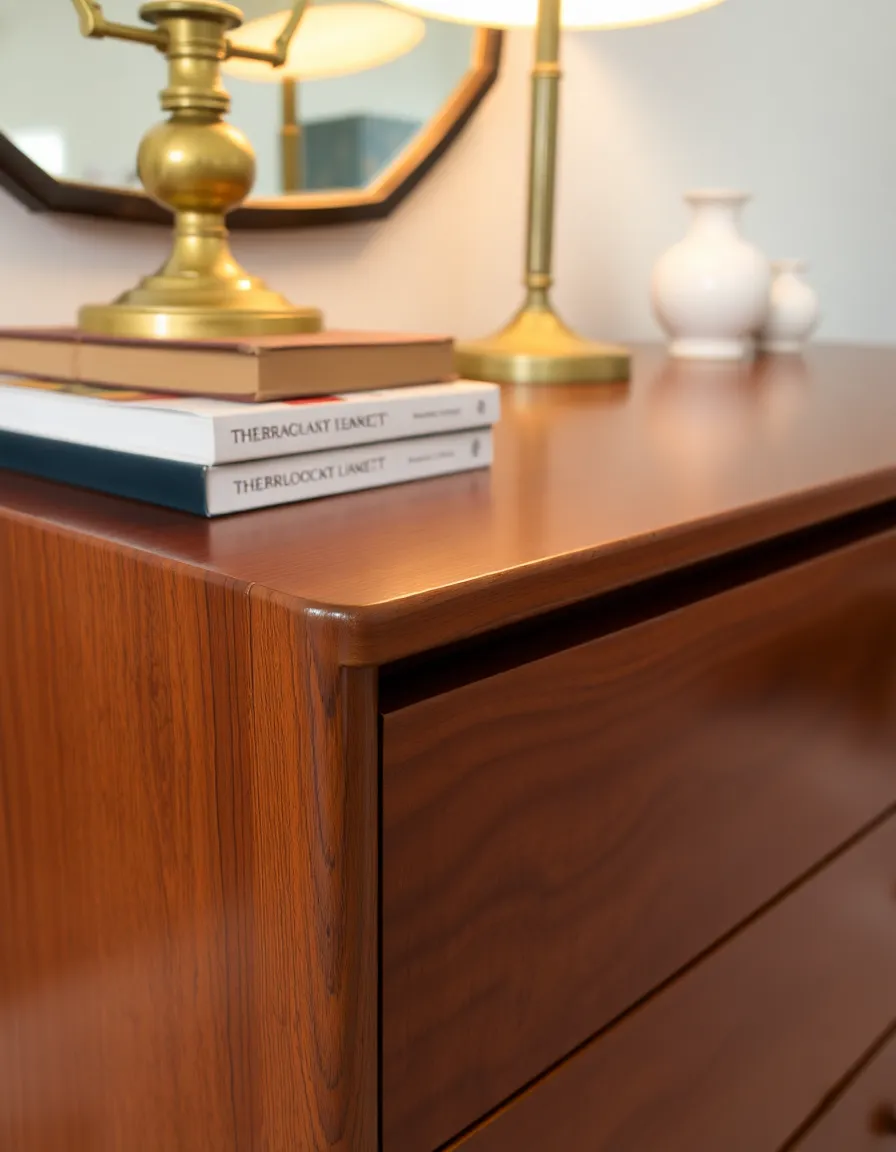
So there you have it—the holy trinity of mid-century bedroom furniture. Tapered legs for that effortless lift, clean lines for no-nonsense style, and wood finishes that bring warmth and character. Whether you’re a die-hard vintage hunter or just dipping your toes into mid-century design, these features are your roadmap to a bedroom that’s equal parts functional and fabulous.
Now, go forth and furnish. And if you find a dresser that actually levitates, call me immediately.

